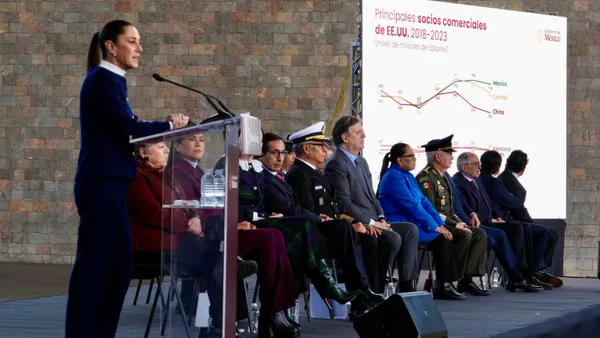Transformation used to be a project that an organization started and finished. Today, transformation has become far less finite – and far more complex.
Part of the reason is the speed of change. In a recent KPMG survey of transformation leaders, 82% said the pace of transformation is accelerating. Beyond that, transformation has become larger in scope and complexity. The same survey found that organizations are typically running multiple transformation programs simultaneously. In fact, more than half of respondents (60%) said transformations have essentially become continuous.
Chances are, your company is already experiencing this phenomenon. As a CFO or finance leader, you play a critical role in navigating the complex demands of continuous change. What does it take to succeed? Experience points to four key capabilities: tracking value, building roadmaps, creating an “orchestration mindset” and guiding people on the journey.
Track value
This is where finance teams have an opportunity to elevate performance with a data-driven approach. Invest ample time upfront in identifying and quantifying the potential value, including and beyond the financial case. Decompose objectives and key results into lower-level operational improvements so you can understand how specific changes contribute to business value. These insights lay the groundwork for monitoring progress, making adjustments and quantifying the impact of multiple initiatives.
Build roadmaps
Your business may have a clear vision and compelling case for change when embarking on one or more transformations. Set your finance team apart by breaking down the strategic vision into quick, measurable outcomes. Develop a meaningful sequence of releases and prioritize them based on their potential value. These roadmaps require an understanding of the target state, business and technology blueprints, and the desired customer or employee experience. Since you’re managing multiple initiatives, make sure the roadmaps are consistent and compatible.
Create an “orchestration mindset”
You no longer have the luxury of tackling major transformations sequentially or independently. You should build the capacity to manage multiple moving parts and evolving goals across multiple, simultaneous programs. What used to be disconnected is becoming ever more interconnected. That necessitates a thoughtful approach to driving transparency beyond simply tracking dependencies. Think of it as building an “orchestration mindset” – that is, moving beyond process standards and embracing an approach akin to the modern application programming interface (API). In other words, build a mechanism for connecting multiple transformation programs. That could include aligning around standard planning intervals, setting a standard definition of what constitutes a release and having an enterprise-wide taxonomy for gauging operating model impacts.
Guide people on the journey
For better or worse, people have an outsized impact on any transformation initiative’s success. Juggling multiple initiatives simultaneously further raises issues related to people and culture. One of the greatest risks is transformation burnout – which can lead to higher turnover. Take care when managing the people experience. Start by understanding the organization’s capacity for change, as well as how the various initiatives interact with each other. Approach engagement and communication from an employee-centric perspective – bringing together all relevant messages and actions. Thinking from the employee’s point of view can also yield a better assessment of the risk of change fatigue.
In the KPMG survey, 80% of executives who have been involved in transformations pointed to a lack of alignment between transformation efforts as the number-one reason for failure. CFOs and other finance leaders can’t control every aspect of transformation. But by focusing on these four capabilities, you can help your organization master the art of continuous transformation while delivering significant business value.










